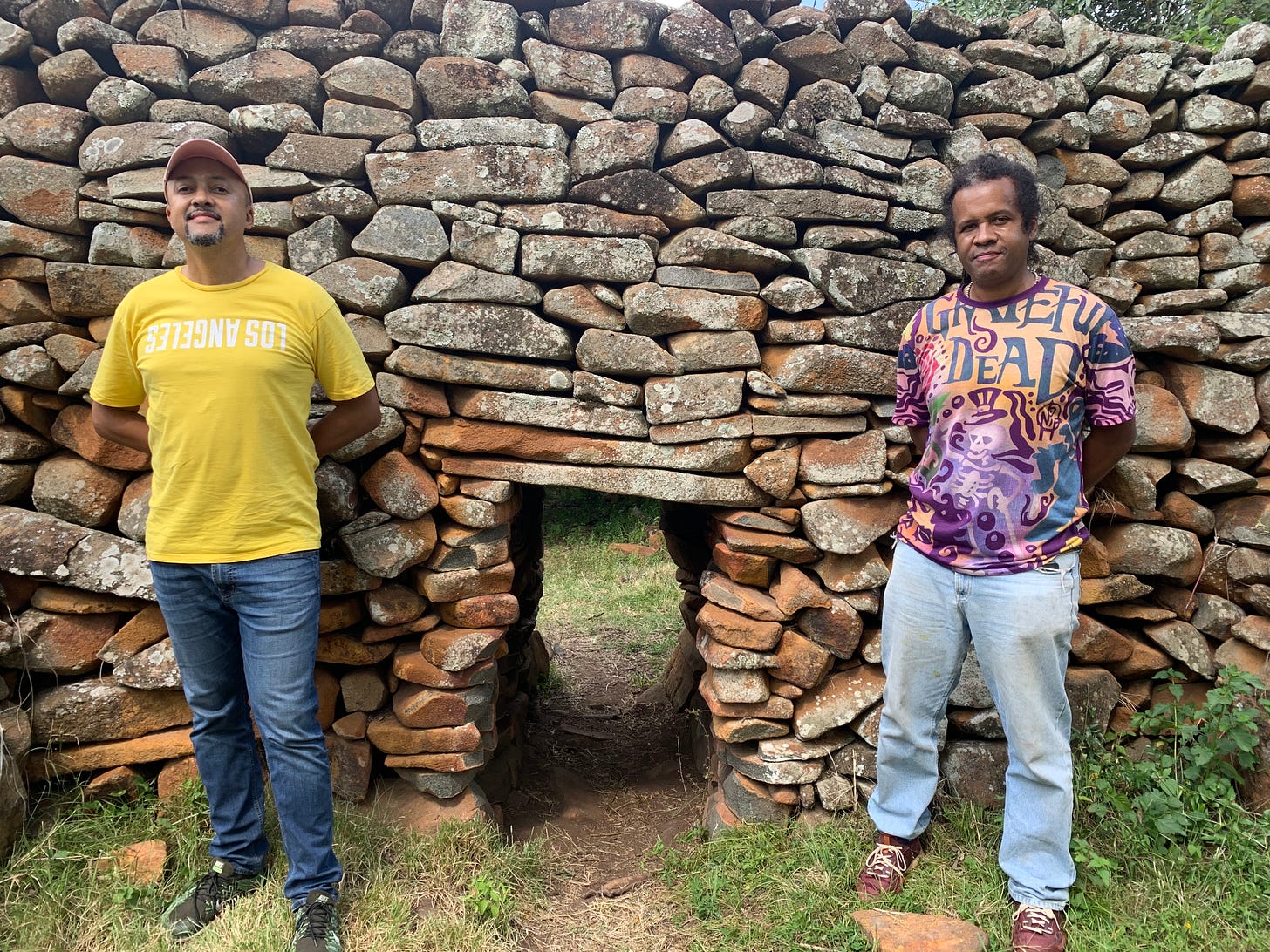Peoples of the Global Majority
The snapshot is of my brother and I, in 2020, visiting Thimlich Ohinga, a 500 year old stone encampment that is Kenya’s answer to Great Zimbabwe. We spent the afternoon exploring this massive civilization, which has been in continuous human use as recently as the 1930s.
I would not have said it back then, but we went in search of the ‘people of the global majority.’ As US-born, Kenyan-raised ‘third culture’ kids, we are both interested in East Africa as the cradle of humankind, and in the great pre-colonial civilizations in Nyanza, the province our family is from and still lives. ‘Indigenous’ has never felt like the right word to me; it has always felt like someone else’s word. But I’ll take ‘native.’ This is our native land.
Growing up in Kenya, I had a clear sense of myself as part of the majority in the sense we were African. The whites and Asians were in the minority. They were absent, for instance, from post-colonial politics, even if they remained overrepresented in the economic sphere. If the first thing I knew was that I was part of a racial-national majority, however, the next thing was that such a majority was less significant than the “tribal” marker I wore by virtue of my name and background.
I think my own disidentification with the discourse of indigeneity as it has emerged in the US academy has everything to do with my personal response to “tribalism” as I experienced its destructive effects in Kenya in my youth. Even today, I can hardly bring myself to utter the word tribe, so hateful is it to me, so much does it remind me of wily politicians manipulating the desperate poor to scapegoat the desperate poor.
I’m going to give a talk this fall on the topic of “people of the global majority” as seen through a minoritarian lens. Minoritarian is a word I learned from my late friend José Muñoz, who in turn drew from women of color feminism of the 1980s, as well as the queer theory of his mentor, Eve Sedgwick, who famously deconstructed the universalizing/minoritizing binarism in Western cultural discourses of homosexuality in her book Epistemology of the Closet. Philosophers Deleuze and Pecheux also figured significantly in the critical genealogy of the minoritarian.
But what means the most to me is how this minoritarian tradition has been taken up by those of us now categorized as the “global majority”—how we’ve used it to understand our own complex positions in a world that simultaneously names us as majority and treats us as peripheral.
Standing among those ancient stones at Thimlich Ohinga, I was reminded that the question isn’t simply about numbers or demographics. It’s about how power moves, how inheritance is claimed, and how the language we use to describe ourselves shapes the possibilities we can imagine.
The global majority, seen through a minoritarian lens, becomes something more nuanced than a demographic category. It becomes a way of understanding how majorities can also be marginalized, how the center and periphery shift depending on where you stand, and how our personal histories—like mine between Kenya and America—complicate every simple story we try to tell about belonging.



